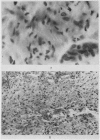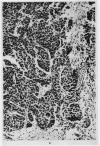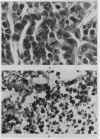Abstract
Hyperthermia (42° C.) exerted an inhibitory effect on the O2 uptake of rabbit VX2 carcinoma cells in vitro, and led to a decrease in viability and growth potential of the cells, as measured by their ability to produce tumours in rabbits. Anaerobic glycolysis of the tumour cells was unaltered by hyperthermia. Respiration and anaerobic glycolysis of normal rabbit liver, kidney and red blood cells were unaffected by the elevated temperature. Local heat was applied to established VX2 tumours in vivo, with a subsequent reduction in tumour size in all cases, the most effective therapy regime being 3 one-hour applications of heat within the mean cell generation time of the tumour. Following heating there was rapid and widespread tumour cell necrosis and lysis, with subsequent replacement of the tumour architecture by connective tissue. There was a prolongation of survival time in 50% of the treated animals, which are still alive 18 months after therapy; all the control animals died within 10 weeks. The selective inhibitory effects of hyperthermia on cancer cells, and its application to human neoplasms, are discussed.
Full text
PDF
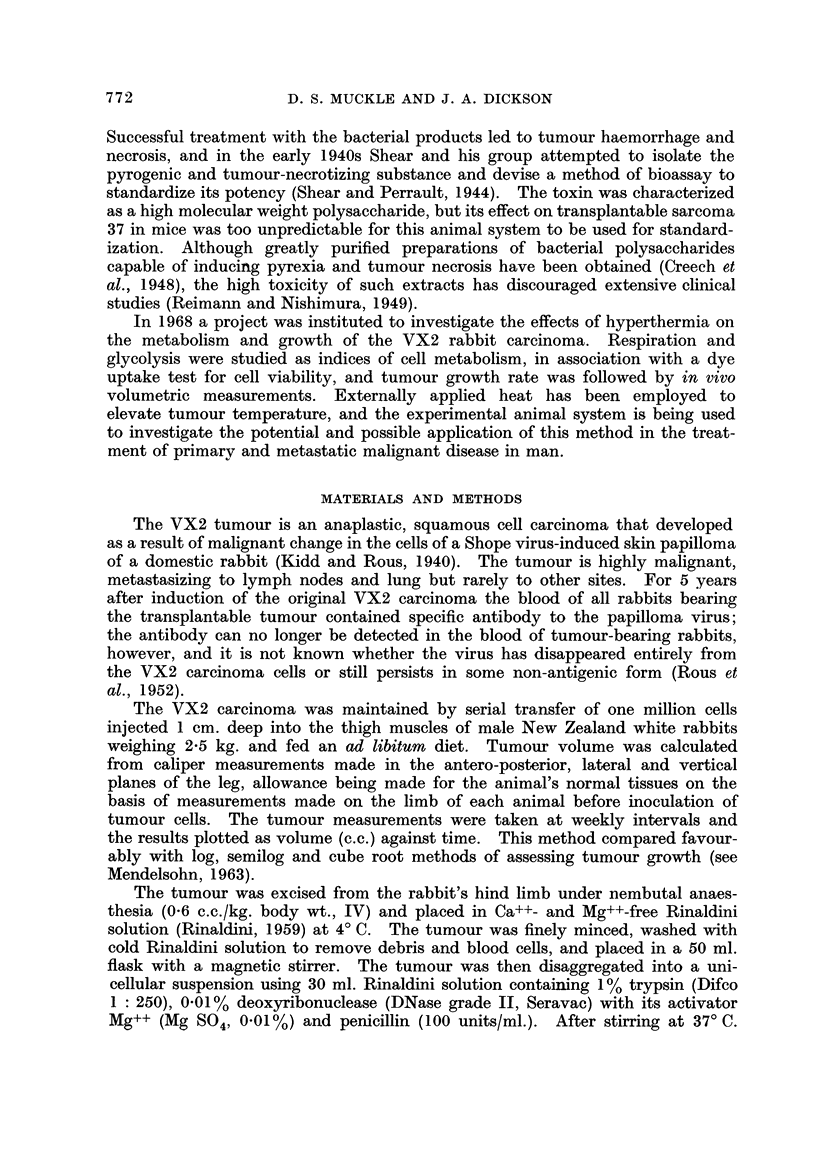
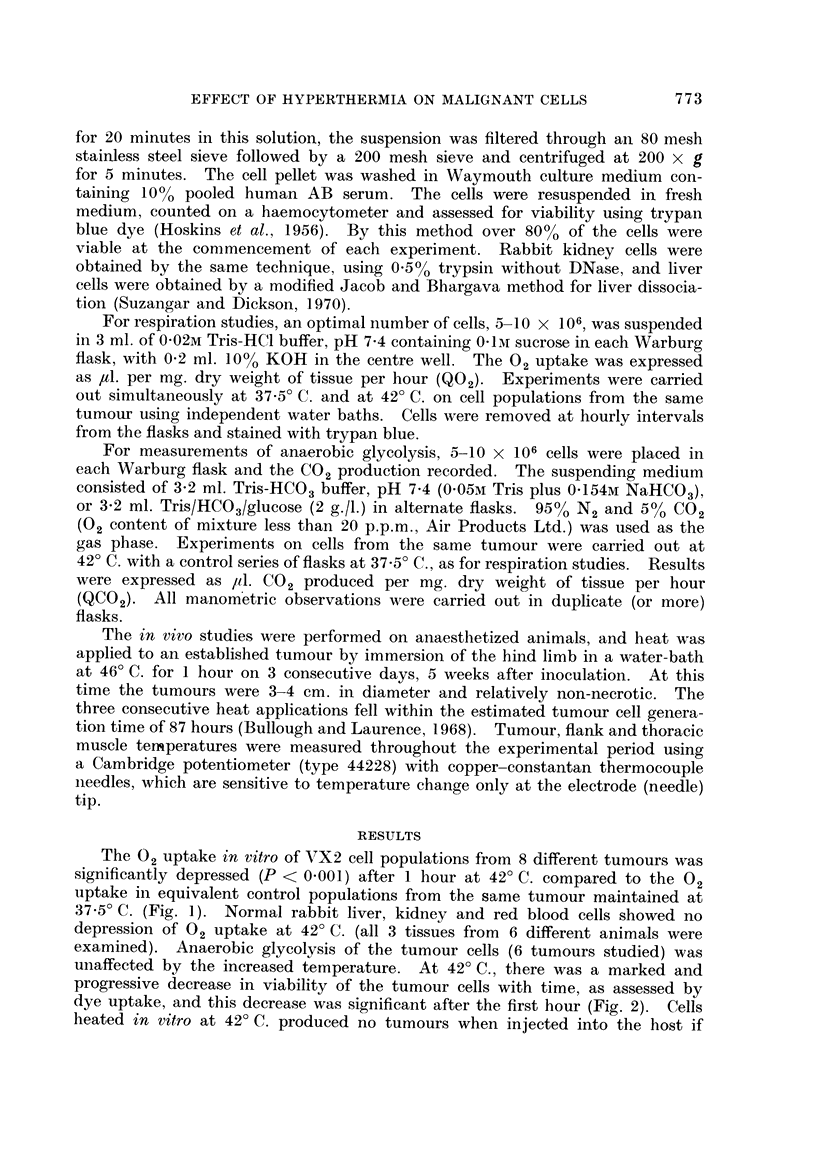
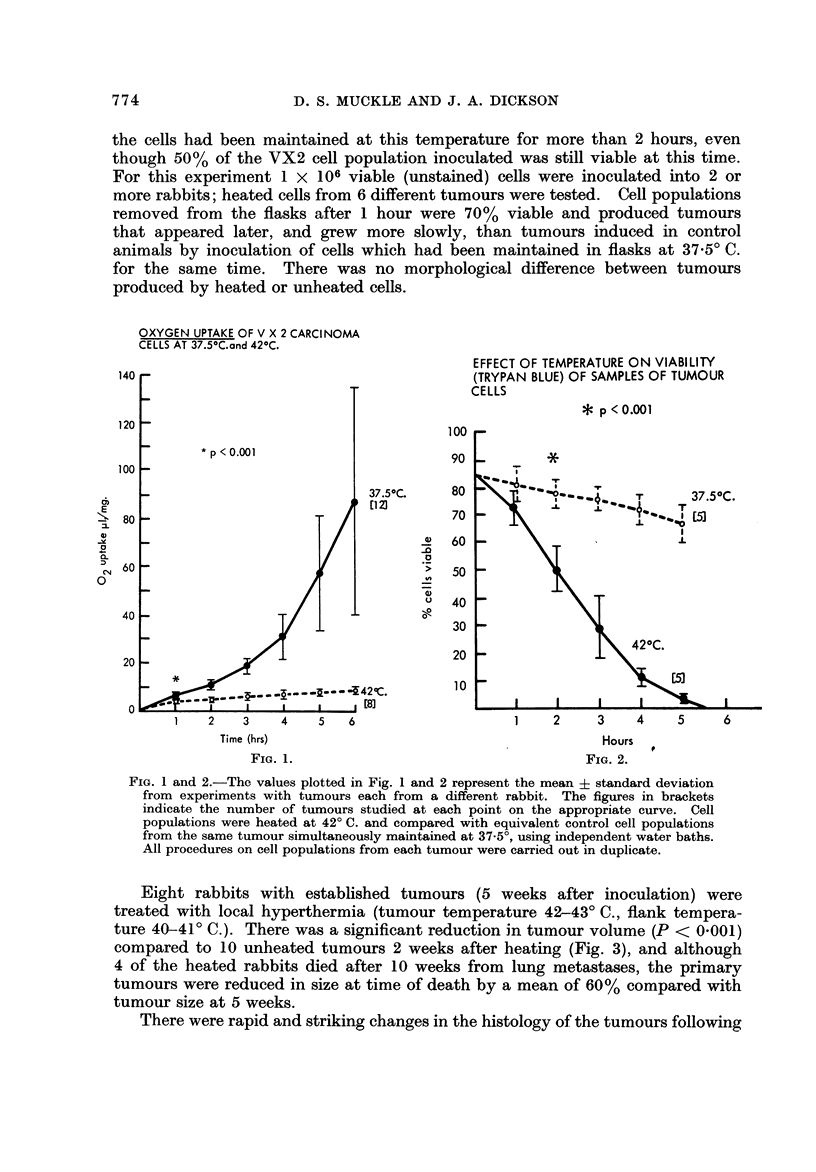
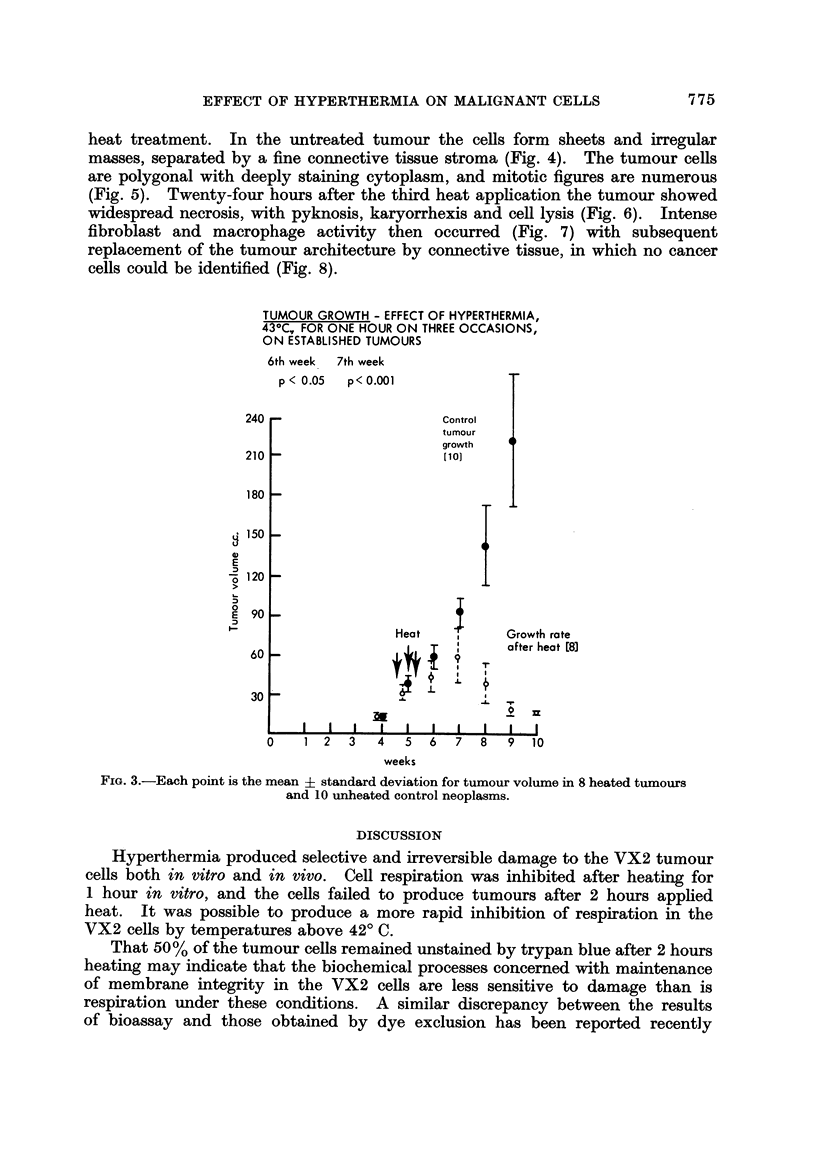
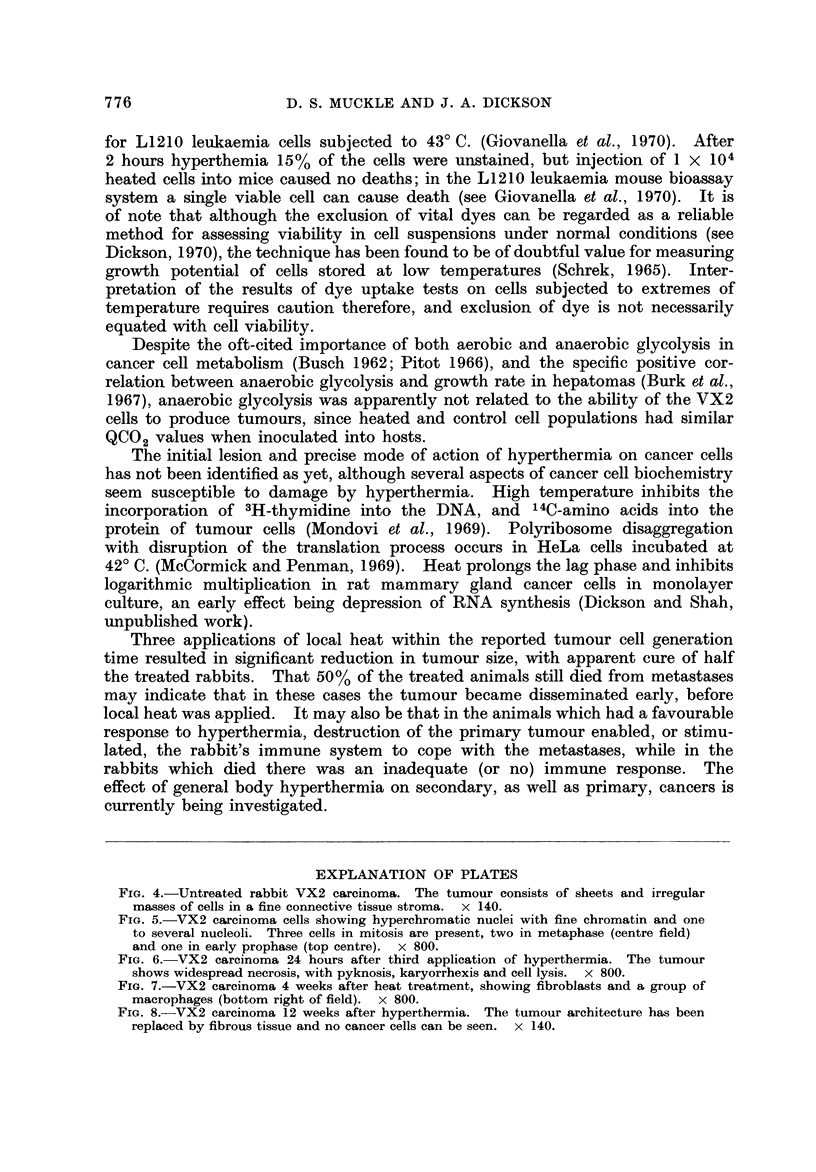


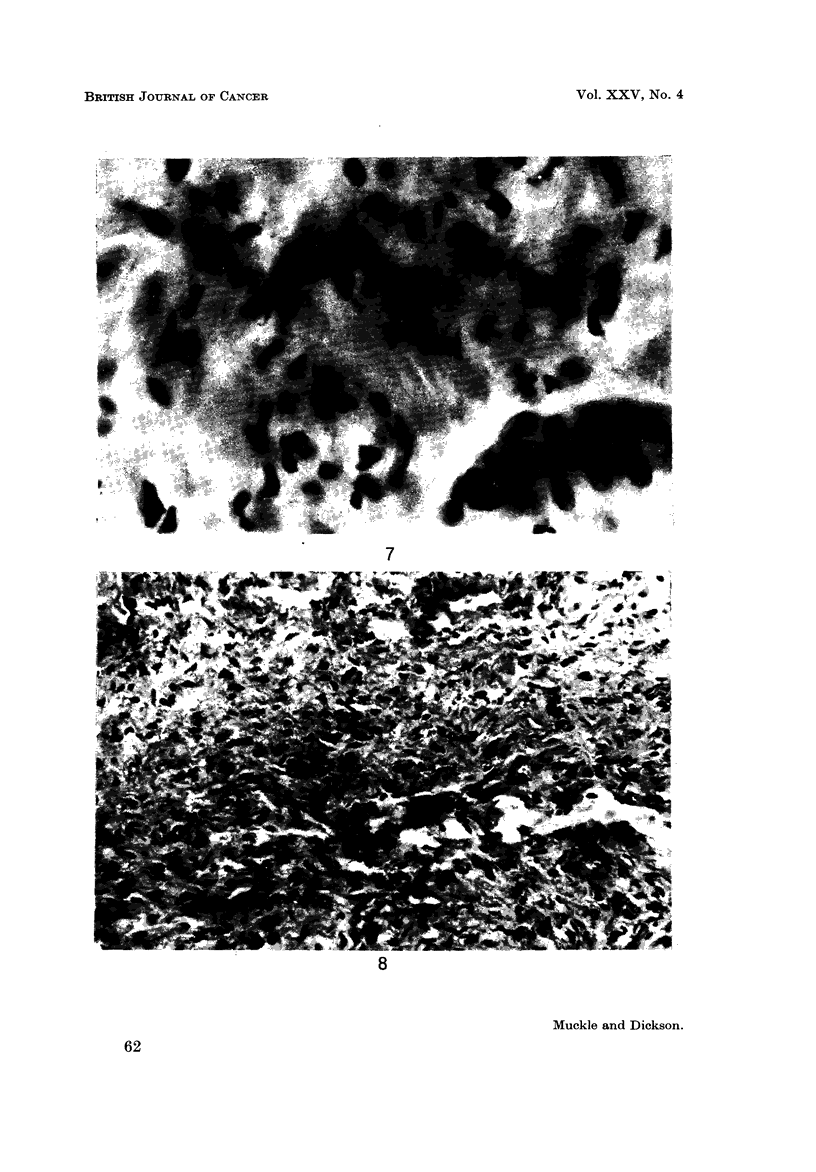
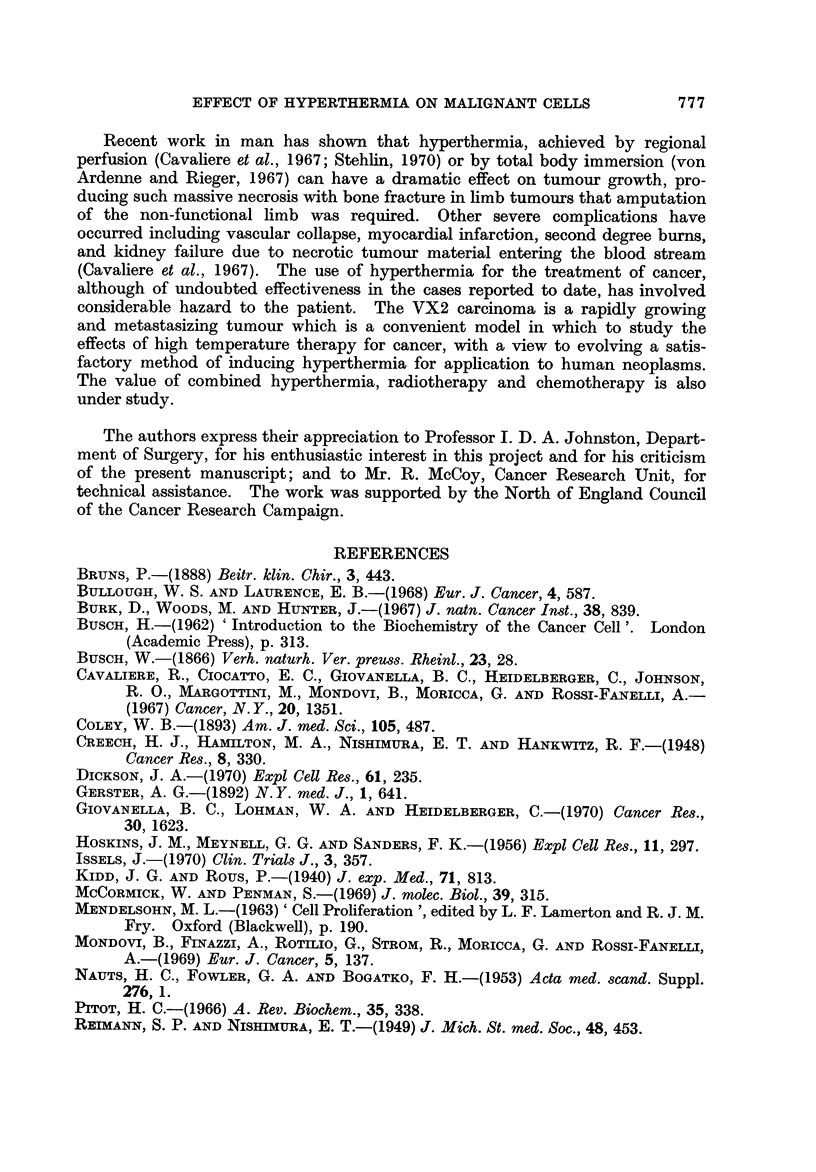
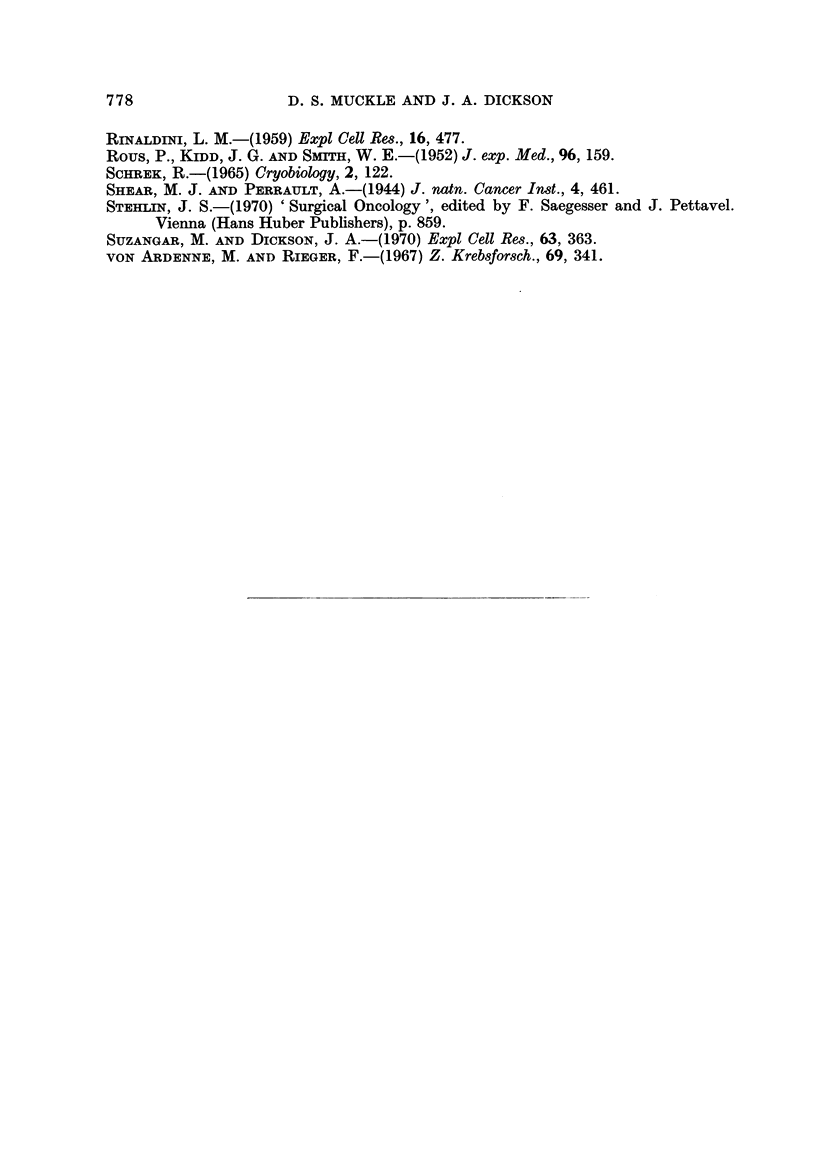
Images in this article
Selected References
These references are in PubMed. This may not be the complete list of references from this article.
- Burk D., Woods M., Hunter J. On the significance of glucolysis for cancer growth, with special reference to Morris rat hepatomas. J Natl Cancer Inst. 1967 Jun;38(6):839–863. [PubMed] [Google Scholar]
- Cavaliere R., Ciocatto E. C., Giovanella B. C., Heidelberger C., Johnson R. O., Margottini M., Mondovi B., Moricca G., Rossi-Fanelli A. Selective heat sensitivity of cancer cells. Biochemical and clinical studies. Cancer. 1967 Sep;20(9):1351–1381. doi: 10.1002/1097-0142(196709)20:9<1351::aid-cncr2820200902>3.0.co;2-#. [DOI] [PubMed] [Google Scholar]
- Dickson J. A. The uptake of non-metabolizable amino acids as an index of cell viability in vitro. Exp Cell Res. 1970 Aug;61(2):235–245. doi: 10.1016/0014-4827(70)90443-x. [DOI] [PubMed] [Google Scholar]
- Giovanella B. C., Lohman W. A., Heidelberger C. Effects of elevated temperatures and drugs on the viability of L1210 leukemia cells. Cancer Res. 1970 Jun;30(6):1623–1631. [PubMed] [Google Scholar]
- HOSKINS J. M., MEYNELL G. G., SANDERS F. K. A comparison of methods for estimating the viable count of a suspension of tumour cells. Exp Cell Res. 1956 Aug;11(2):297–305. doi: 10.1016/0014-4827(56)90105-7. [DOI] [PubMed] [Google Scholar]
- McCormick W., Penman S. Regulation of protein synthesis in HeLa cells: translation at elevated temperatures. J Mol Biol. 1969 Jan;39(2):315–333. doi: 10.1016/0022-2836(69)90320-9. [DOI] [PubMed] [Google Scholar]
- Mondovì B., Finazzi Agrò A., Rotilio G., Strom R., Moricca G., Rossi Fanelli A. The biochemical mechanism of selective heat sensitivity of cancer cells. II. Studies on nucleic acids and protein synthesis. Eur J Cancer. 1969 May;5(2):137–146. doi: 10.1016/0014-2964(69)90060-7. [DOI] [PubMed] [Google Scholar]
- ROUS P., KIDD J. G., SMITH W. E. Experiments on the cause of the rabbit carcinomas derived from virus-induced papillomas. II. Loss by the Vx2 carcinoma of the power to immunize hosts against the papilloma virus. J Exp Med. 1952 Aug;96(2):159–174. doi: 10.1084/jem.96.2.159. [DOI] [PMC free article] [PubMed] [Google Scholar]
- Schrek R. In vitro methods for measuring viability and vitality of lymphocytes exposed to 45 degree, 47 degree, and 50 degree C. Cryobiology. 1965 Nov-Dec;2(3):122–128. doi: 10.1016/s0011-2240(65)80097-9. [DOI] [PubMed] [Google Scholar]



